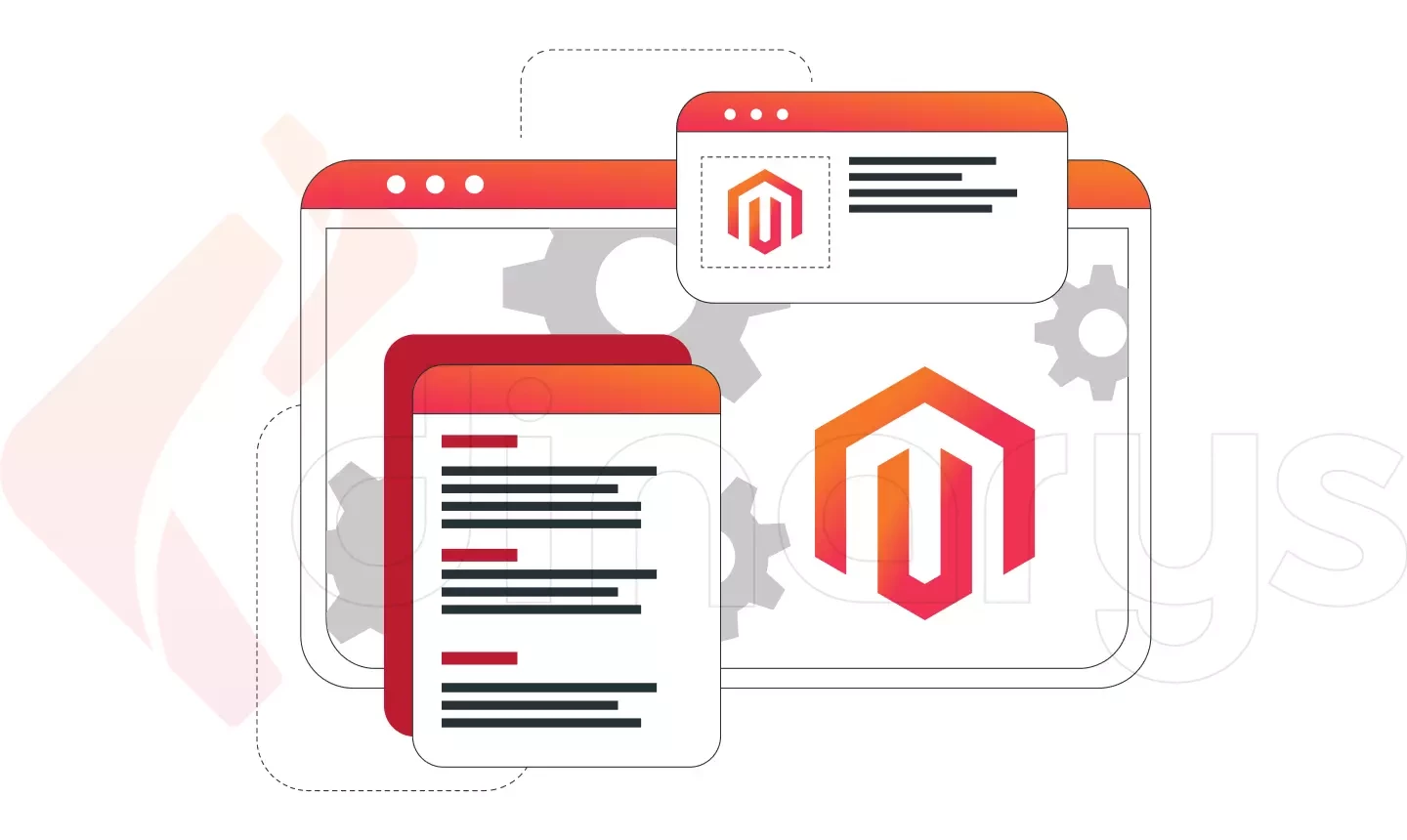Content
30 Magento Interview Questions for Hiring Top Developers

Time to read: 25 minutes
Magento 2 is an innovative e-commerce platform that allows for building and adjusting up-to-date solutions while following ever-changing e-commerce business trends. Partially, it is possible to the vast global community of Magento developers, who are the heart of this platform and significantly contribute to Magento’s evolution. This community is dynamically growing, and so is the demand for Magento 2 developers. Numerous new businesses have been tempted by Magento’s popularity and reliability.
Hundreds of thousands of developers work with this platform daily. In 2021, the number of Magento 2 developers reached around 300,000 worldwide. A vast talent pool might considerably simplify tasks for online business owners and web development companies to find the best candidates for their projects.
However, let’s not leave things to chance. Hiring a professional Magento 2 developer requires a comprehensive understanding of Magento development specifics to objectively evaluate candidates’ knowledge and ascertain that they are the masters of their craft.

This article introduces the top 30 Magento interview questions and answers to help employers and employees prepare for an interview and establish beneficial cooperative relations.
5 Tips for the Interview Process
Once you’ve put yourself up to the task of hiring a Magento 2 developer, you should become acquainted with several factors that may influence the course of an interview. Below are five simple but important things to keep in mind when you are going through the hiring process:
-
Define the essential skills of a candidate you’re most interested in. To avoid becoming stuck looking for perfection, it’s necessary to select the highest-priority skills and other qualities that are in alignment with your project needs and your corporate culture. For example, you can prioritize certified developers with proper time management skills or be ready to hire a junior developer who is a creative thinker.
-
Match the level of a candidate’s expertise with the difficulty of the Magento 2 interview questions. It’s obvious that when you are hiring a junior developer who needs further training, it’s feasible to ask him or her basic questions only.
-
Ask the same Magento 2 interview questions for every candidate. It relates to situations when you interview candidates for a one-level position. It will help you remain unbiased and clearly identify the advantages of one candidate over another.
-
Take notes during an interview. Concise notes taken during an interview will capture the questions asked, allow you to accurately assess a candidate’s skills, and facilitate your decision-making process after the interview phase.
-
Do not lose sight of soft skills. Regarding the fact that a Magento developer is in a fairly technical position, soft skills are still of great value. They can help your potential employees effectively leverage their technical competencies and work coherently with clients and other team members. To learn more about must-have soft skills for a software developer, watch this video:
30 Magento 2 Interview Questions
Our Magento 2 experts compiled a list of the top 30 Magento 2 interview questions and answers to help both employers and candidates get the best results during interviews.
Question # 1. How does Magento register a component?
Components (modules, themes, and language packages) can be registered with a registration.php file. It uses the static Magento\Framework\Component\ComponentRegistrar::register method that sets the location of a component. Magento looks for registration.php files in predefined locations (they can be found in the app/etc/registration_globlist.php file).
Question # 2. What is the loading order of modules?
Magento uses module sequences for loading different file types: configuration files, view files (including CSS, less, and template files), and setup classes. A module can define its sequence in a module.xml file. The
Question # 3. What are the product types, and how do they differ?
Magento, by default, has six types of products (seven in Adobe Commerce):
- Simple Product – a main product type. It represents a physical item.
- Configurable Product – a product with variations. Each variant is a separate, simple product. Example: a T-shirt of different colors and sizes.
- Grouped Product – allows the combining of multiple products into groups. Customers choose from a set of products they want to purchase. As a result, a buyer gets an opportunity to acquire all the products at once instead of buying them separately. The selected products are added to a cart as individual items.
- Bundle Product – allows customers to “build their own” product from an assortment of options. The bundle could be a gift basket, computer, or anything else that can be customized. Before adding this product to a cart, buyers must first customize it using a set of predefined options. The final price will depend on their choices. Each item in the bundle is a separate product. The SKU and weight attributes can be fixed or dynamic. Administrators can specify whether the parts of the bundle product will be delivered together or separately.
- Virtual Product – not a physical product. Virtual products can be services, memberships, warranties, subscriptions, etc. They have no weight, so there is no need to choose a delivery method for these products at checkout.
- Downloadable Product – a digital product that consists of one or more files to download. Like the virtual type, it also has no weight, so there is no need to choose a delivery method for these products at checkout.
- Gift Card (Adobe Commerce only) – a product type that represents a code of letters and numbers. Customers can buy gift cards and send them to friends via email or regular mail. The gift card code can be applied to cover an order’s total amount.
Question # 4. What are the ways of customizing a Magento code?
Magento provides many flexible tools for customizing:
- Preferences. Main idea – replacing an implementation. Preferences allow for the overriding of classes by using a
node in a di.xml file. The main requirement here is that the overridden class be inherited from the original class/interface. If not, PHP will not allow an object manager to inject such a class into a constructor. - Observers. Main idea – Observers are PHP classes executed whenever an event they are configured to watch is dispatched by an event manager. Unlimited numbers of observers can be attached to an event. However, an observer executes only if the event it watches is called.
- Plugins. Main idea – change any public method of any class by inserting logic before, after, or around its execution. Before a plugin can be changed, the parameters of the original method must be changed; after the plugin, the execution results of the original method can be changed. Around plugins can replace any public method or cancel the execution of some method. Unlike observers, plugins can be sorted.
Lets talk about itHave a project in mind?
Question # 5. How can a new layout be defined in a module?
Layouts can be placed in a module's
Question # 6. What can a layout container do?
The child elements of a container are rendered automatically. А container can wrap child elements with specific CSS class names, HTML tags, and HTML ids.
Question # 7. How can the layout of a page be changed?
The
Question # 8. What to use to remove a block – remove or display attribute?
The “display” attribute disables the rendering of a specific element. This means that a block (or container) is not rendered but is loaded, instantiated, and not removed from a layout tree.
The “remove” attribute fully removes an element. When a block (or container) is removed, its child elements are removed from a layout tree. Removed blocks are not instantiated and loaded.
Question #9. How can a parent theme template be overridden?
Copy the path of the original file to the
Question #10. How can theme styles be customized?
- To extend parent styles, create a
/web/css/source/ directory in a child theme, and an “_extend.less” file there. The rules and variables declared in this file always have precedence over those declared in “_theme.less.” However, this works only if the theme’s parent is blank. - To override parent styles, create a
/web/css/source/ directory in the child theme, and a “_theme.less” file there. A child's “_theme.less” file overrides a parent file. - To extend module styles, create a
/ /web/css/source/ directory, and an “_extend.less” file there. - To override module styles, create a
/ /web/css/source/ directory, and an “_module.less” file there. This file overrides the “_module.less” file of a specific module.
Question #11. Which handles can be used to customize a configurable product page?
Several handles can manage a product layout, such as “default” or “catalog_product_view.” Also, Magento has separate handles for a specific product type. In the case of a configurable product, it has a “catalog_product_view_type_configurable” layout.
Question #12. Where can translation files be stored?
Translations can be created directly in a module:
Question #13. What if there are two translations for the same string?
Translation priority follows the sequence, where “module translations” have the lowest priority and the “Magento database” has the highest priority:
-
Module translations
-
Translation package
-
Theme translations
-
Magento database
If two translations for the same string appear in one file, the last translation is used.
Question #14. Who can have a root category?
A root category is basically a container for a main menu in a category tree. A root category can be assigned to a website store.
Question #15. How can a new router be added to a router list?
Create a di.xml file for a specific area in a module and use the “type” node to add a new item to the “routerList” argument for the Magento\Framework\App\RouterList class.
Question #16. How do URL rewrites work?
Url Rewrite is a router that can process SEO-friendly URLs. It searches for a requested URL in a “url_rewrite” table. This table has two important columns: “request_path” and “target_path”. If there is a record that matches a requested URL, the router starts a forward process with a founded URL from the “target_path” column.
Question #17. How can virtual types be used?
Virtual types allow for the creation of a unique class configuration using an object manager’s argument replacement feature.
This is a helpful tool that can do more than the
Inside the di.xml, the virtual type becomes an alias to the original class. Configurations can be placed inside the
Virtual types are useful for situations in which injecting a class with special arguments is needed.
Question #18. How can a custom shipping carrier be added?
Adding a custom shipping carrier means adding it to the config.xml file. This file is used to define the default values for a shipping method and to set a carrier model.
Question #19. What is the best practice – composition or inheritance?
Magento encourages the use of object composition over class inheritance. Using composition over inheritance makes an extension easier to maintain when class changes occur and updates when new features need to be implemented. Also, Magento has a flexible and easy-to-use object manager that makes a composition even easier.
Lets talk about itHave a project in mind?
Question #20. What design patterns does Magento have?
Magento uses many design patterns, such as
- Front Controller
- Singleton Pattern
- Object Manager
- Dependency Injection
- Service Contract
- Module Pattern
- Factory Pattern
- Proxy Pattern
Question #21. What are proxy classes?
Proxy – a tool that helps with circular dependencies.
Proxies extend other classes to become lazy-loaded versions. Proxies are generated, so they need not be manually written. To inject a proxy of some class, reference a needed class in the form \Original\Class\Name\Proxy to the constructor. With the proxy, an original class will not be instantiated until it is requested.
Question #22. What are service contracts?
Service contacts are a set of PHP interfaces, which are APIs defined for a module. A service contract includes data interfaces (which preserve data integrity) and service interfaces (which hide business logic details). Service contacts improve an upgrade process, formalize a customization process, and decouple modules. Therefore, the best practice is to communicate within modules only through an API. This way, a module is unaware of the internals of another, so the implementation can change.
Question #23. What are the differences between data models and models?
A model is a class that represents an entity or a record from a database. A model stores data; it does not have a direct connection to a database or logic for data manipulation (such as saving, loading, deleting, etc.).
Data models are like models, but they are part of a service contract called Data API. Data API provides access to a module's entity data. Together with a data model interface, a data model defines the getters and setters for each data element.
Unlike usual models, data models are limited. AbstractSimpleObject, which data models extend, has no public getter. Therefore, it is impossible to set and get any from an object like the usual models.
Question #24. What methods does a collection have?
A collection provides many useful functions for working with a result set:
- addFieldToSelect($field, $alias = null)
- addFieldToFilter($field, $condition = null)
- setPageSize($size)
- setCurPage($page)
- setOrder($field, $direction = self::SORT_ORDER_DESC)
- getItems()
- getAllIds()
- getSize()
- toArray($arrRequiredFields = [])
- getSelect()
The EAV collection has some more methods:
- addAttributeToSelect($attribute, $joinType = false)
- addAttributeToFilter($attribute, $condition = null, $joinType = 'inner')
- addAttributeToSort($attribute, $dir = self::SORT_ORDER_ASC)
- groupByAttribute($attribute)
- removeAttributeToSelect($attribute = null)
- addExpressionAttributeToSelect($alias, $expression, $attribute)
Question #25. How can a UI component be added to a page?
The main difference between how a UI component can be added to a page is how a JS layout configuration is passed to a page:
-
A JS layout can be hardcoded into a template inside the
-
Magento can initialize JS components using layout XML. The place where it’s used more is a checkout page in the checkout_index_index.xml file. The main advantage of initializing a JS component using an XML layout is extensibility. Magento parses XML files and merges them into one so configurations can be easily extended and modified. An XML file is converted to a JSON object, which is passed into a main component when it is initialized. Also, component configurations can be passed via the $block->getJsLayout() method.
-
Admin components are rendered in a third way. A JS layout is generated using the configuration files in /view/adminhtml/ui_component/.
Question #26. What is the difference between "extension_attributes" and "custom_attributes"?
Custom attributes are EAV attributes. Working with EAV entities means working with different attributes. For example, a catalog module has several attributes that are treated as built-in attributes and that can be easily retrieved via predefined methods. Custom attributes can be retrieved using the “getCustomAttributes()” method. This method only returns EAV attributes that are not defined as a “system” (applicable only for a customer and customer address entity). Therefore, it is important to set the “system” option to “false” to include an attribute in the custom_attributes array.
Extension attributes are used to extend entities. They often use more complex data types than custom attributes do. This feature is available only for data models implemented in “ExtensibleDataInterface”. The extension attributes feature allows for the dynamic creation of additional data models or data containers for an entity.
Question #27. What is the purpose of using local storage?
Magento uses local storage for private content. Private content is stored only on the client-side, as it is specific to individual users. Magento 2 uses the Magento_Customer/js/customer-data RequireJS module to work with local storage.
Question #28. How can we get customer attributes on any page without breaking the full page cache?
Call the customerData.get() method in the JavaScript to retrieve a needed attribute. No other actions are required.
Lets talk about itHave a project in mind?
Question #29. What is an MSI?
MSI – Multi-Source Inventory. MSI introduces the ability to link separate sources to a store and uses an algorithm of selection that chooses a source depending on various conditions. This algorithm analyzes and determines the best match for sources. Sources represent physical locations that store and ship available products. Stocks represent a virtual group of sources mapped to sales channels. A sales channel is currently limited to websites.
Question #30. What are the advantages and disadvantages of GraphQL? How does it differ from the Rest API?
One of the most common problems with REST is over-fetching. This is because a client can download data only by reaching endpoints that return fixed data structures. It’s very difficult to design an API in such a way that it’s able to provide clients with their exact data needs. Using GraphQL, a client can specify exactly the data needed in a query.
Conclusion
Choosing a Magento 2 developer for your project is a responsible step and a challenge, especially if you don’t possess the technical background necessary to clearly evaluate your candidates’ competencies. The above 30 Magento interview questions can greatly benefit your hiring process.
As a Magento development company, Dinarys has successfully implemented many profitable projects. If you are looking for a team to fully delegate all the tasks associated with your project, we will be glad to assist you. We also provide enterprise agencies with staff augmentation services to diversity their expertise and foster successful results. Contact us today to talk about your business needs.
Let professionals meet your challenge
Our certified specialists will find the most optimal solution for your business.





